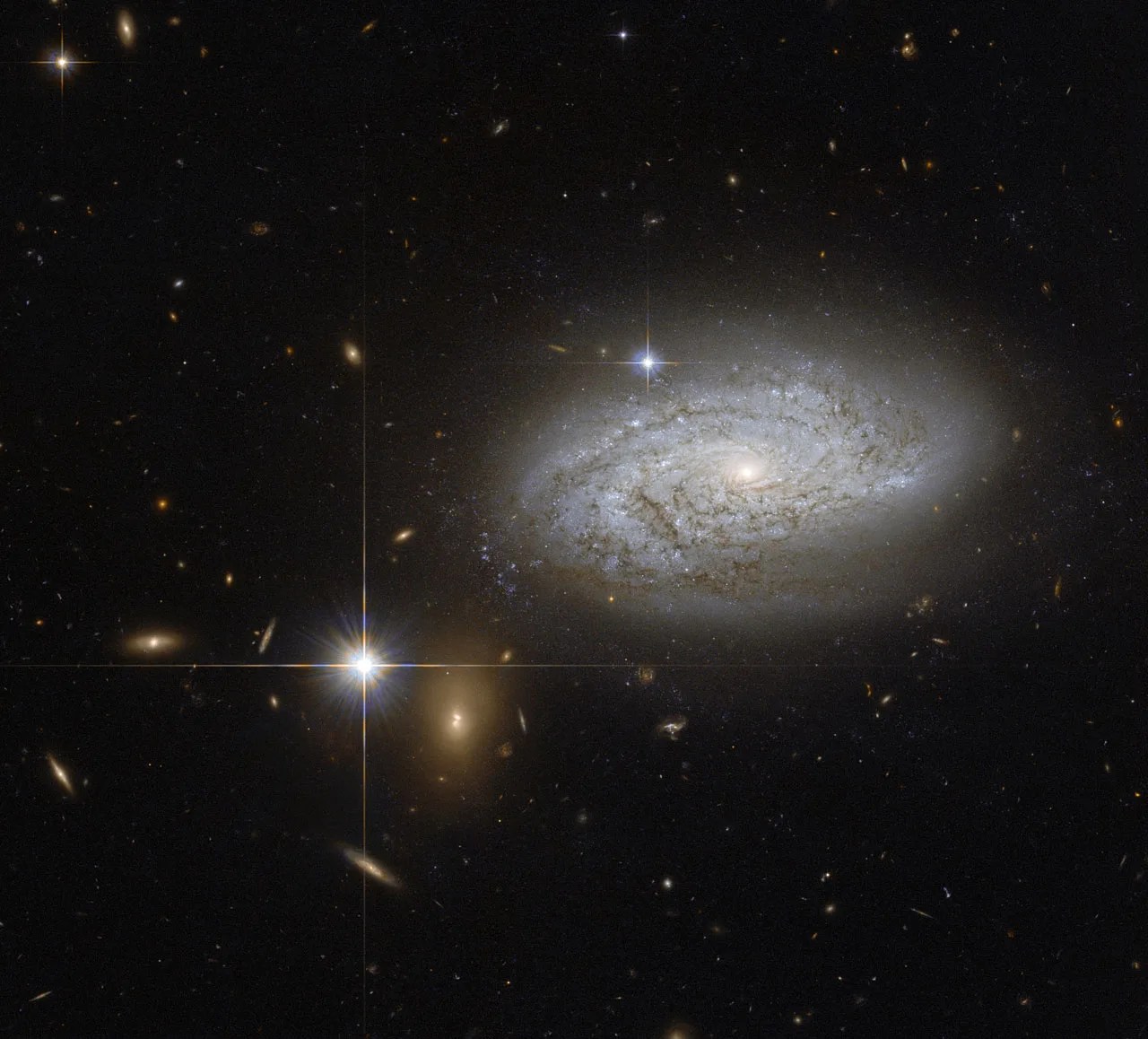
A cosmological measuring tape
This NASA/ESA Hubble Space Telescope image shows the spiral galaxy NGC 3021 which lies about 100 million light-years away in the constellation of Leo Minor (The Little Lion). Among many other types of stars, this galaxy contains Cepheid variable stars, which can be used work out the distance to the galaxy. These stars pulsate at a rate that is closely related to their intrinsic brightness, so measurements of their rate of pulsation and their observed brightness give astronomers enough information to calculate the distance to the galaxy itself.
Credits: European Space Agency
Image CreditEuropean Space Agency
Size640x579px
